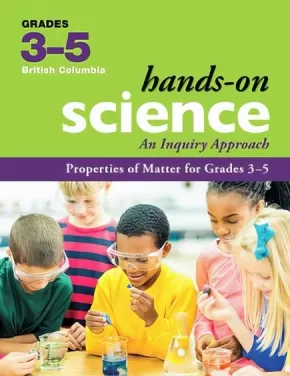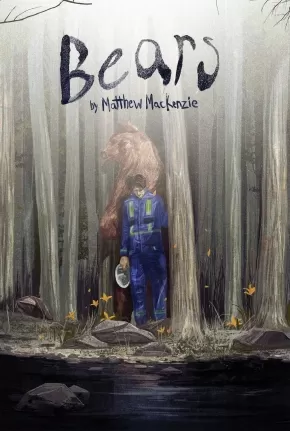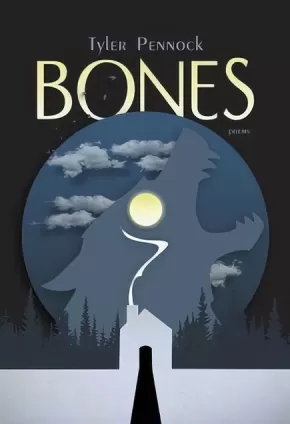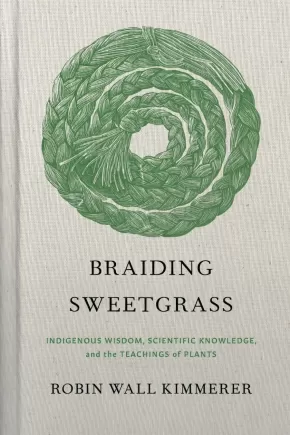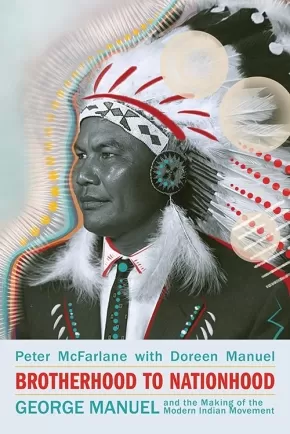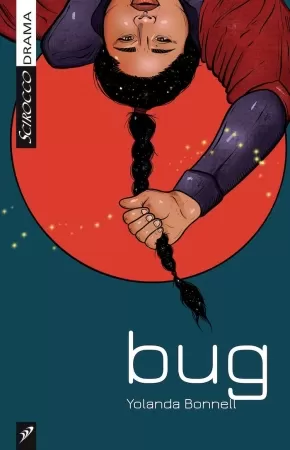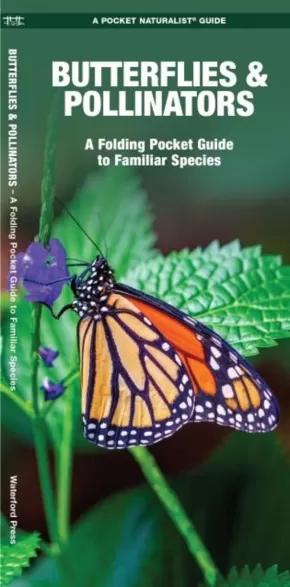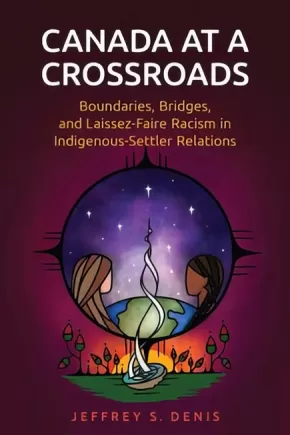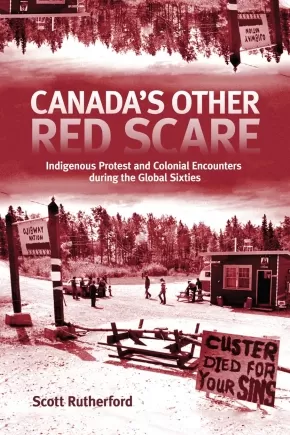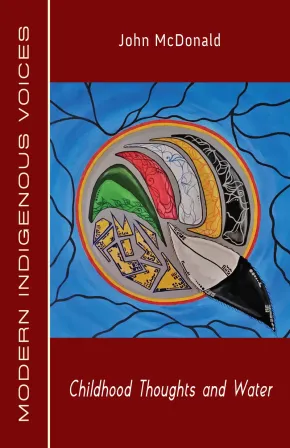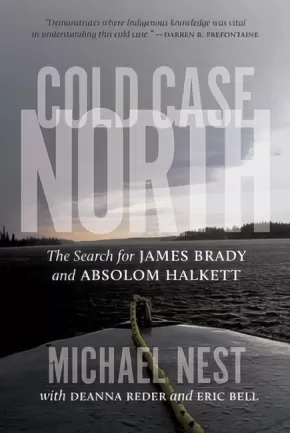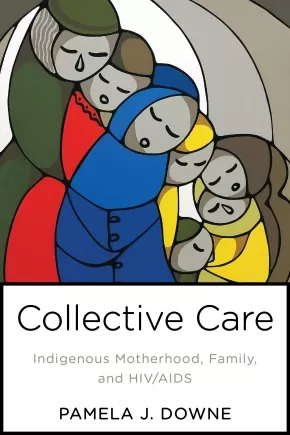Books
Synopsis:
Properties of Energy from Hands-On Science: An Inquiry Approach completely aligns with BC’s New Curriculum for science. Grounded in the Know-Do-Understand model, First Peoples knowledge and perspectives, and student-driven scientific inquiry, this custom-written resource:
- emphasizes Core Competencies, so students engage in deeper and lifelong learning
- develops Curricular Competencies as students explore science through hands-on activities
- fosters a deep understanding of the Big Ideas in science
Using proven Hands-On features, Properties of Energy contains information and materials for both teachers and students including: Curricular Competencies correlation charts; background information on the science topics; complete, easy-to-follow lesson plans; reproducible student materials; and materials lists.
Innovative new elements have been developed specifically for the new curriculum:
- a multi-age approach
- a five-part instructional process—Engage, Explore, Expand, Embed, Enhance
- an emphasis on technology, sustainability, and personalized learning
- a fully developed assessment plan for summative, formative, and student self-assessment
- a focus on real-life Applied Design, Skills, and Technologies
- learning centres that focus on multiple intelligences and universal design for learning (UDL)
- place-based learning activities, Makerspaces, and Loose Parts
In Properties of Energy, students investigate properties of energy. Core Competencies and Curricular Competencies will be addressed while students explore the following Big Ideas:
- The motion of objects depends on their properties.
- Light and sound can be produced and their properties can be changed.
- Forces influence the motion of an object.
Educator & Series Information
This book is from the Hands-On Science: An Inquiry Approach (for BC) series. The new Hands-On Science comprehensive resources completely align with the redesigned Science Curriculum for British Columbia.
Recommended for use with students in grades 3 to 5.
Additional Information
200 pages | 8.50" x 11.00"
Synopsis:
Properties of Matter from Hands-On Science for British Columbia completely aligns with BC’s New Curriculum for Science. Grounded in the Know-Do-Understand model, First Peoples knowledge and perspectives, and student-driven scientific inquiry, this custom-written resource:
- emphasizes Core Competencies, so students engage in deeper and lifelong learning
- develops Curricular Competencies through hands-on activities
- fosters a deep understanding of the Big Ideas in science
Using proven Hands-On features, Properties of Matter contains information and materials for both teachers and students including: Curricular Competencies correlation charts; background information on the science topics; complete, easy-to-follow lesson plans; reproducible student materials; and materials lists.
Innovative new elements have been developed specifically for the new curriculum:
- a multi-age approach
- an emphasis on technology, sustainability, and personalized learning
- a fully developed assessment plan for summative, formative, and student self-assessment
- a focus on real-life Applied Design, Skills, and Technologies
- learning centres that focus on multiple intelligences and universal design for learning (UDL)
- place-based learning activities and Makerspaces
Properties of Matter for Grades 3-5 addresses Core Competencies and Learning Standards while students
explore the following Big Ideas:
- All matter is made of particles.
- Matter has mass, takes up space, and can change phase.
- Solutions are homogeneous.
Educator Information
This book is from the Hands-On Science: An Inquiry Approach (for BC) series. The new Hands-On Science comprehensive resources completely align with the redesigned Science Curriculum for British Columbia.
Recommended for use with students in grades 3 to 5.
Additional Information
200 pages | 8.50" x 11.00"
Synopsis:
As the prime suspect in a workplace accident, Floyd has to get out of town fast. Pursued by the RCMP, he heads through the Rockies for Burnaby, BC, along the route of the Trans Mountain Pipeline. By the time he reaches the Pacific, Floyd has experienced changes: his gait widening, muscles bulging, sense of smell heightening…
Awards
- 2018 Carol Bolt Award winner
- 2018 Dora Mavor Moore Award for Outstanding New Play winner
- 2018 Toronto Theatre Critics Award for Best New Canadian Play winner
Reviews
“Bears is inventive and daring theatre.”— Liz Nicholls, Edmonton Journal
“It’s packed with the same adrenaline rush you’d get from a sprint. And like any run, Bears will leave you breathless.” — Amanda Ghazale Aziz, NOW Magazine
“It’s a blend of chase story, identity search, ode to Indigenous spirituality, dark comedy, interdisciplinary spectacle, and eco-activist plea.”— The Georgia Straight
Educator Information
Bears has been performed in Edmonton, Maskwacîs, Saddle Lake First Nation, Toronto, Calgary, Vancouver, Canmore, Kamloops, Wells, and Victoria.
Additional Information
64 pages | 5.00" x 7.50"
Synopsis:
A collection of words and imagery from diverse voices grounded in the land that explore community in relation to time. Filmmaker/writer, Darlene Naponse, curates a gathering of expression about time that has passed, time that is now and time that comes.
Before the Usual Time features contributions by:
Chuquai Billy
Sherwin Bitsui
Emily Clarke
Craig Commanda
Jessie Fiddler
Lori Flinders
Daniel Groulx
Sy Hoahwah
Ajuawak Kapashesit
Leanna Marshall
Darlene Naponse
Joan Naviuyuk Kane
Dennis Saddleman
Ardelle Sagutcheway
Craig Santos Perez
Cathy Smith
Additional Information
180 pages | 5.50" x 8.50"
Synopsis:
Poems about a young two-spirit Indigenous man moving through shadow and trauma toward strength and awareness. Bones, Tyler Pennock's wise and arresting debut, is about the ways we process the traumas of our past, and about how often these experiences eliminate moments of softness and gentleness. Here, the poem's journey inward, guided by the world of dreams, seeking memories of a loving sister lost beneath layers of tragedy and abuse. With bravery, the poems stand up to the demons lurking in the many shadows of their lines, seeking glimpses of a good that is always just out of reach. At moments heartrending and gut-punching, at others still and sweet, Bones is a collection of deep and painstaking work that examines the human spirit in all of us. This is a hero's journey and a stark look at the many conditions of the soul. This is a book for survivors, for fighters, for dreamers, and for believers.
Reviews
"Here is a spare and urgent voice that speaks of 'wounds and beauty,' that gestures to a story of trauma and abuse while offering us a potent journey of self-reckoning and reclamation. Bones entwines brutality with the deepest tenderness and in its clear-eyed way asks us, as poetry must, to re-see the world." --Catherine Bush, author of Accusation and The Rules of Engagement
"Tyler Pennock's poetry unfurls like breath: measured, light, caught, whispering, and vital. It charts memory with a steady hand and unerring allegiance to locating the 'beauty/in terrible things.' Bones addresses the effects of intergenerational, state-sponsored trauma with enviable grace, inscribing and affirming life on the other side of overwhelming pain, abuse, and grief. It carries on, resilient, defiant, gazing at the stars, one breath at a time." --Laurie D. Graham, author of Settler Education
"Tyler Pennock's Bones is a soft meandering through the memories of the narrator's hearthome: a place in which trauma, kinship, abuse, and nostalgia cradle one another in a circle. Here, poetics are deployed to inspect the most minute of objects with such wild abandon that the narrator transplants us into a world rife with sharpness so as to make the image complete, focussed, lifelike, photographic even as he continually 'wish[es he] were like water'. Here we find memory and dream animated in equal measure: two spirits sitting in a basement, a headless mother, a white bear, wihtiko, and a sister slowly vanishing. Lyrical, witty, heart-wrenching, and empowering, Pennock's debut book of poetry is a contemplative epic asking us to ponder the ethics of remembrance in all of its lacings of razing and revitalization." --Joshua Whitehead, author of Full-Metal Indigiqueer and Jonny Appleseed
Additional Information
104 pages | 6.00" x 8.75"
Synopsis:
Updated with a new introduction from Robin Wall Kimmerer, the special edition of Braiding Sweetgrass celebrates the book as an object of meaning that will last the ages. Beautifully bound with a new cover featuring an engraving by Tony Drehfal, this edition includes a bookmark ribbon, a deckled edge, and five brilliantly colored illustrations by artist Nate Christopherson. In increasingly dark times, we honor the experience that more than 350,000 readers in North America have cherished about the book—gentle, simple, tactile, beautiful, even sacred—and offer an edition that will inspire readers to gift it again and again, spreading the word about scientific knowledge, indigenous wisdom, and the teachings of plants.
As a botanist, Robin Wall Kimmerer has been trained to ask questions of nature with the tools of science. As a member of the Citizen Potawatomi Nation, she embraces the notion that plants and animals are our oldest teachers. In Braiding Sweetgrass, Kimmerer brings these two lenses of knowledge together to take us on “a journey that is every bit as mythic as it is scientific, as sacred as it is historical, as clever as it is wise” (Elizabeth Gilbert).
Drawing on her life as an indigenous scientist, and as a woman, Kimmerer shows how other living beings—asters and goldenrod, strawberries and squash, salamanders, algae, and sweetgrass—offer us gifts and lessons, even if we've forgotten how to hear their voices. In reflections that range from the creation of Turtle Island to the forces that threaten its flourishing today, she circles toward a central argument: that the awakening of ecological consciousness requires the acknowledgment and celebration of our reciprocal relationship with the rest of the living world. For only when we can hear the languages of other beings will we be capable of understanding the generosity of the earth, and learn to give our own gifts in return.
Educator Information
Includes an updated introduction from the author.
Additional Information
456 pages | 5.50" x 8.50" | Hardcover
Synopsis:
Charged with fresh material and new perspectives, this updated edition of the groundbreaking biography From Brotherhood to Nationhood brings George Manuel and his fighting tradition into the present.
George Manuel (19201989) was the strategist and visionary behind the modern Indigenous movement in Canada. A three-time Nobel Peace Prize nominee, he laid the groundwork for what would become the Assembly of First Nations and was the founding president of the World Council of Indigenous Peoples. Authors Peter McFarlane and Doreen Manuel follow him on a riveting journey from his childhood on a Shuswap reserve through three decades of fierce and dedicated activism.
In these pages, an all-new foreword by celebrated Mi'kmaq lawyer and activist Pam Palmater is joined by an afterword from Manuel’s granddaughter, land defender Kanahus Manuel. This edition features new photos and previously untold stories of the pivotal roles that the women of the Manuel family played and continue to play in the battle for Indigenous rights.
Reviews
“Brotherhood to Nationhood is more than just a biography of the life of George Manuel; it demonstrates the roots of an Indigenous internationalism and political theory that is grounded in the ethics, knowledge, and practices of the Secwepemc people.” – Leanne Betasamosake Simpson, author of As We Have Always Done
Educator Information
Table of Contents
Foreword - Dr. Pamela Palmater
Preface - Peter McFarlane
Preface - Doreen Manuel
Part I. The Neck of the Chicken
1. Paradise, Paradise Lost, 1960
2. The Hard-Luck Shuswap Kid, 1920–1932
3. White Plague, Red Victims, 1932–1954
4. Local Agitator to Provincial Leader, 1955–1960
5. A Future for Your Children, 1960–1963
Part II. Building the National Movement
6. Community Development and the Arthur Laing Gang, 1965–1967
7. Down the Garden Path: Chretien Andras Consultations, 1968–1969
8. From White Paper to Red Paper, 1969–1970
9. The National Chief
10. The National Indian Philosophy, 1971–1972
Part III. Indian Shogun
11. International Travels
12. Land Title and the James Bay Battle, 1972–1973
13. Red Power
14. Political Eruptions in British Columbia, 1975
15. A Voice for the Fourth World, 1975–1976
16. Back to British Columbia,1976–1977
17. The Peoples’ Movement, 1977–1979
18. Constitutional Express, 1980
Part IV. Final Days
19. European Express, 1981–1982
20. Passing the Torch, 1982–1989
Epilogue
Afterword - Kanahus Manuel
Additional Information
402 pages | 6.00" x 9.00" | Revised, 2nd Edition
Synopsis:
Beautiful and delicious gluten-free, grain-free, and dairy-free recipes, fully endorsed by Whole30.
As millions of people know, one of the toughest things about completing the Whole30 is figuring out what to eat the other 335 days of the year. Kirsten Buck, creator of Buck Naked Kitchen, struggled with her weight and chronic eczema for years before she transformed her life through food. She adopted a mostly paleo way of eating--gluten-free, grain-free, dairy-free, healthy fats, no refined sugars--and experienced dramatic weight loss. Soon after she went on to win the first-ever "Next Whole30 Star" competition and is now a certified holistic nutritionist, sharing delicious and beautiful recipes on her blog and Instagram with thousands of fans. From her Pesto Chicken Salad Sandwich for lunch, to Moroccan Lamb Stew for dinner, to the stunning Summer Berry Galette to satisfy your sweet tooth, there is something for every taste. In addition, there are recipe basics for making your own mayo, yogurt, salad dressings, tahini, and more, which prove that healthy eating doesn't have to break the bank.
Reviews
“[Buck Naked Kitchen] combines Kirsten’s education as a certified holistic nutritionist with her background and experience focusing on whole foods and creating healthy, approachable and delicious meals. Not only is every recipe gluten, grain AND dairy-free, did I also mention the Manitoba favourite: chicken tenders and HONEY DILL?! You gotta try it!”—Travel Manitoba
What I see in this book is a woman showing up as her truest, most authentic self, using food to speak to us, to connect with us, and to show us and herself love. Kirsten has brought her journey into the light, and the joy, vibrancy, and newfound confidence with which she both cooks and moves through this world glows through these pages.”—from the Foreword by Melissa Urban, Whole30 Co-Founder and CEO
“There are so many classic recipe staples in Kirsten's cookbook that it deserves a permanent place on every kitchen counter! I felt like she invited me into her home and showed me how to cook nourishing food from scratch. The photography is beautiful and Kirsten's approach to food is so effortless and natural.”—Joy McCarthy, bestselling author of Joyous Health and The Joyous Cookbook
Additional Information
272 pages | 8.25" x 9.31" | Full-colour photos throughout | Hardcover
Synopsis:
bug is a solo performance and artistic ceremony that highlights the ongoing effects of colonialism and intergenerational trauma experienced by Indigenous women, as well as a testimony to the women's resilience and strength. The Girl traces her life from surviving the foster care system to her struggles with addictions. She fights, hoping to break the cycle in order to give her daughter a different life than the one she had. The Mother sits in Alcoholics Anonymous meetings, recounting memories of the daughter that was taken from her, and the struggles of living on the streets in Northern Ontario. They are both followed by Manidoons, a physical manifestation of the trauma and addictions that crawl across generations.
bug reveals the hard truths that many Indigenous women face as they carve out a space to survive in contemporary Canada, while holding on to so much hope.
Reviews
"bug pulls back the curtain on the falsehood of reconciliation using storytelling and movement, bringing everything we've seen in the news and the history books into the heart and gut." - Mooney on Theatre
Educator Information
Recommended for grades 10 to 12.
Additional Information
80 pages | 5.50" x 8.50"
Synopsis:
Some of the most vibrant colors and patterns in the Animal Kingdom are found among butterflies. Gawdy swallowtails, exquisite gossamer-wings, and a multitude of eye-catching brushfoots are particular standouts, though plenty of whites, sulphurs, metalmarks, and skippers are also adorned with splendid markings. Flowering plants across North America attract some 700 butterfly species as well as thousands of moths, bees, wasps, flies, and beetles, not to mention some hummingbirds and bats. This portable reference is a handy tool for those wishing to deepen their understanding of butterflies and other colorful pollinators. It features beautiful illustrations of 70 familiar butterflies and moths as well as some especially common larvae and pupae. Also included are notes on life cycles and other common pollinators. Laminated for durability, this lightweight, 12-panel folding pocket guide is a terrific resource for educators, learners, naturalists, and gardeners.
Additional Information
12 pages | 4.10" x 8.35"
Synopsis:
Synopsis:
A detailed transnational history of Indigenous activism in Northwestern Ontario and its global significance.
Indigenous activism put small-town northern Ontario on the map in the 1960s and early 1970s. Kenora, Ontario, was home to a four-hundred-person march, popularly called "Canada's First Civil Rights March," and a two-month-long armed occupation of a small lakefront park. Canada's Other Red Scare shows how important it is to link the local and the global to broaden narratives of resistance in the 1960s; it is a history not of isolated events closed off from the present but of decolonization as a continuing process. Scott Rutherford explores with rigour and sensitivity the Indigenous political protest and social struggle that took place in Northwestern Ontario and Treaty 3 territory from 1965 to 1974. Drawing on archival documents, media coverage, published interviews, memoirs, and social movement literature, as well as his own lived experience as a settler growing up in Kenora, he reconstructs a period of turbulent protest and the responses it provoked, from support to disbelief to outright hostility. Indigenous organizers advocated for a wide range of issues, from better employment opportunities to the recognition of nationhood, by using such tactics as marches, cultural production, community organizing, journalism, and armed occupation. They drew inspiration from global currents - from black American freedom movements to Third World decolonization - to challenge the inequalities and racial logics that shaped settler-colonialism and daily life in Kenora. Accessible and wide-reaching, Canada's Other Red Scare makes the case that Indigenous political protest during this period should be thought of as both local and transnational, an urgent exercise in confronting the experience of settler-colonialism in places and moments of protest, when its logic and acts of dispossession are held up like a mirror.
Reviews
"I was truly impressed with this book. Rutherford provides detailed insights into historical developments in the Kenora region and the post–World War II racism that is so fundamental in shaping current Indigenous realities. The almost seamless integration with global political commentary and international debates is simply superb. There are tough concepts presented here – and folks will find them uncomfortable – but a study like this is much overdue and will attract considerable international attention." - Ken Coates, Johnson-Shoyama Graduate School of Public Policy, University of Saskatchewan
Educator Information
Table of Contents
Acknowledgments / vii
Figures follow page viii
Introduction: The Town with a Bad Name / 3
1 Canada’s Alabama? Race, Racism, and the Indian Rights March in Kenora / 21
2 “Resolving Conflicts”: Culture, Development, and the Problem of Settlement / 40
3 “The quest for self-determination”: The Third World, Anti-colonialism, and “Red Power” / 62
4 “Nobody seems to listen”: The Violent Death Report and Resistance to Continuing Indifference / 83
5 The Anicinabe Park Occupation: Red Power and the Meaning of Violence in a Settler Society / 104
6 The Native People’s Caravan: Surveillance, Agents Provocateurs, and Multi-racial Coalitions / 124
Conclusion: Dear Louis Cameron / 145
Notes / 153
Bibliography / 187
Index / 203
Additional Information
208 pages | 5.98" x 9.01"
Synopsis:
Childhood Thoughts and Water is a collection of Beat Poetry, Spoken Word, Performance Art and Lyrical Verse. This is a work which journeys into the memories and events of an Urban Indigenous warrior's struggles to reconnect with a language and culture that is seemingly always almost out of reach. The common theme of reconnecting with nature and with water is interspersed with the imagery of childhood recollections and anecdotes about life and love, aspirations and defeats, and the desire to achieve greatness in spite of the obstacles and barriers inherent in a life lived on the fringes, in the shadows and on the streets, in the spotlight and behind the backstage curtain.
Educator & Series Information
This book is part of the Modern Indigenous Voices series.
Additional Information
80 pages | 5.50" x 8.50" | Paperback
Synopsis:
For fans of true crime, an unsolved mystery of missing persons, police conspiracies, and private investigations in an Indigenous community in northern Canada.
Métis leader James Brady was one of the most famous Indigenous activists in Canada. A communist, strategist, and bibliophile, he led Métis and First Nations to rebel against government and church oppression. Brady’s success made politicians and clergy fear him, and he had enemies everywhere.
In 1967, while prospecting in Saskatchewan with Cree Band Councillor and fellow activist Absolom Halkett, both men vanished without a trace from their remote lakeside camp. For 50 years rumours swirled of secret mining interests, political intrigue, assassination, and murder. Cold Case North is the story of how a small team, with the help of a local Indigenous community, exposed police failure in the original investigation, discovered new clues and testimony, and gathered the pieces of the North’s most enduring missing persons puzzle.
Reviews
“This engrossing account charts the efforts of three dedicated people to determine the fate of two missing Indigenous men in the north of Canada. [...] Meticulously researched, this smoothly written tale of injustice showcases the authors’ tenacity and arouses the reader’s indignation. This is a scathing rebuke of the RCMP’s failure to take the case of missing Indigenous people seriously.” —Publisher's Weekly
“Like too many cases involving missing and murdered Indigenous people, authorities failed to ensure that Brady and Halkett’s deaths were properly investigated. This book helps get to the bottom of the fate of these two men, and demonstrates why investigators should never dismiss the knowledge of Indigenous peoples.” —Darren Prefontaine, author of Gabriel Dumont
“Cold Case North is part true crime thriller, part gripping mystery about the disappearance of Métis legend James Brady and Absolom Halkett in northern Saskatchewan. It is also about Indigenous knowledge, investigative incompetence, and the stuff of legend.” —Paul Seesequasis, author of Blanket Toss Under Midnight Sun
“A fascinating search for the truth, Cold Case North unravels the layers of a decades’ old mystery. It is about how communities hold knowledge for generations, and how missing loved ones are never forgotten.” —Katherena Vermette, author of River Woman and The Break
Additional Information
272 pages | 5.00" x 7.00"
Synopsis:
Collective Care provides an ethnographic account of urban Indigenous life and caregiving practices in the face of Saskatchewan’s HIV epidemic. Based on a five-year study conducted in partnership with AIDS Saskatoon, the book focuses on the contrast between Indigenous values of collective kin-care and non-Indigenous models of intensive maternal care. It explores how women and men negotiate the forces of HIV to render motherhood a site of cultural meaning, personal and collective well-being, and, sometimes, individual and community despair. It also introduces readers to how HIV is Indigenized in western Canada and how all HIV-affected and -infected mothers must negotiate this cultural and racialized terrain.
Featuring in-depth narrative interviews, notes from participant observation in AIDS Saskatoon’s drop-in centre, and a photovoice component, this book offers an accessible account of an engaged anthropologist’s work with a community that is both vulnerable and resilient. Each chapter begins with an ethnographic vignette that introduces central concepts, including medical anthropology, syndemics, kinship, and Indigeneity, with the overall aim of humanizing those affected by HIV in western Canada and beyond.
Reviews
"By sharing perspectives that are often ignored, this work provides important insight not found elsewhere. The reliance on the words of Indigenous women is a wonderful example of the kind of allyship we have been calling for. Rather than speaking for the women, Pamela J. Downe has created a literary space where they can speak for themselves. The truth of their stories comes through in vibrant quotes about loving and raising children in a collective way." — Dawn Lavell-Harvard, Director of the First Peoples House of Learning, Trent University, and former President of the Native Women’s Association of Canada
"Collective Care icontributes to our understanding of Indigenous family life and the lives of those affected by HIV/AIDS. Because the book focuses on family relationships and care in a context that is somewhat familiar to students, yet different from more frequently studied communities with HIV/AIDS. This book will be a useful tool for teaching." — William McKellin, Assistant Professor in the Department of Anthropology, University of British Columbia
Educator Information
Table of Contents
Preface
Chapter 1: Beginning
Chapter 2: Family
Chapter 3: Motherhood
Chapter 4: Fatherhood
Chapter 5: Loss
Chapter 6: Love
Chapter 7: Closing
References
Additional Information
176 pages | 6.00" x 9.00" | Paperback



